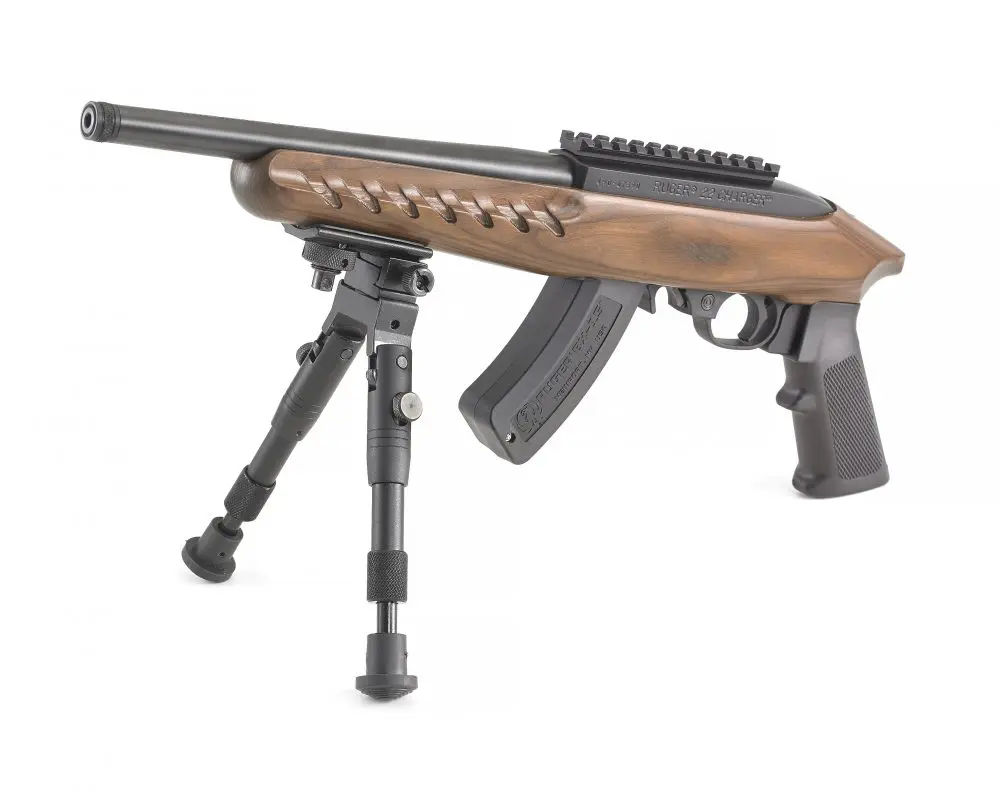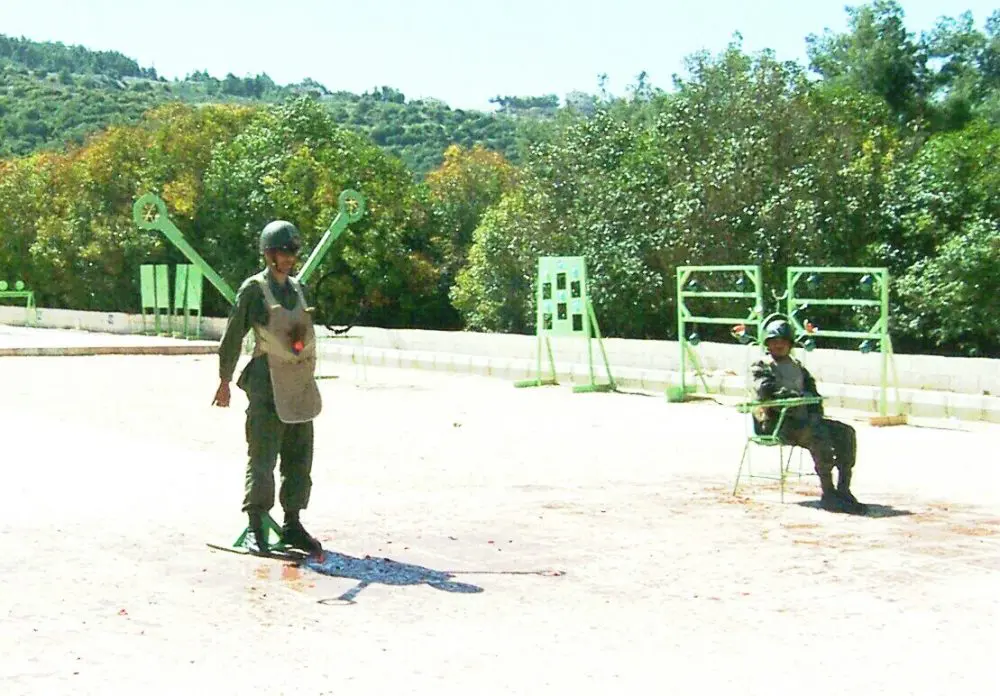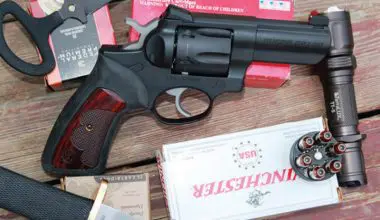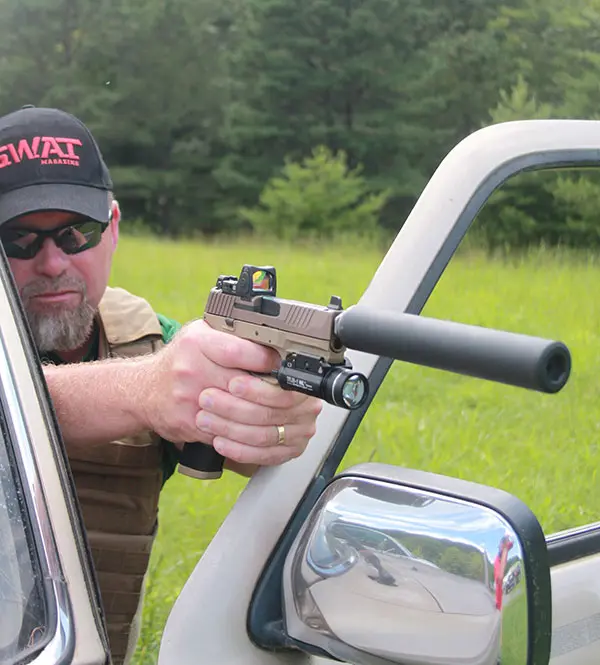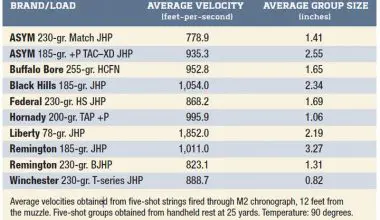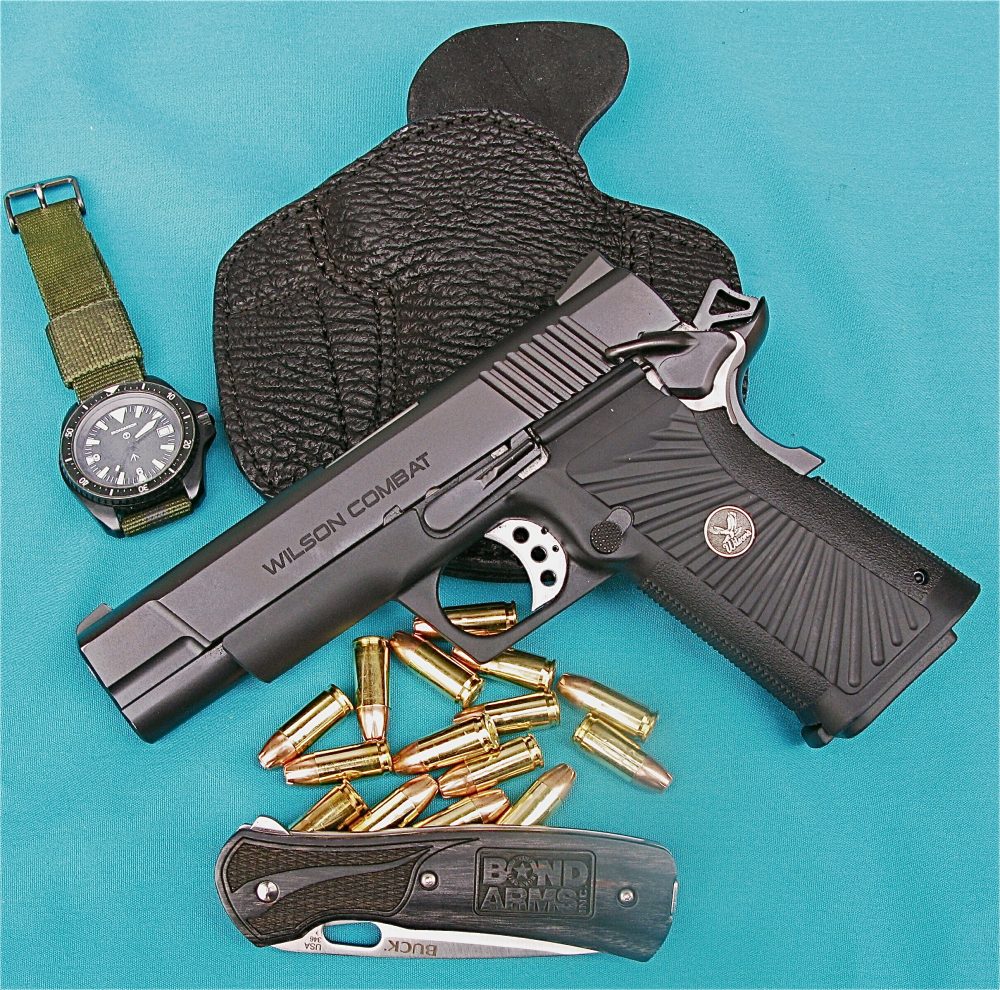Table of Contents
REVIEWING THE STI 1911
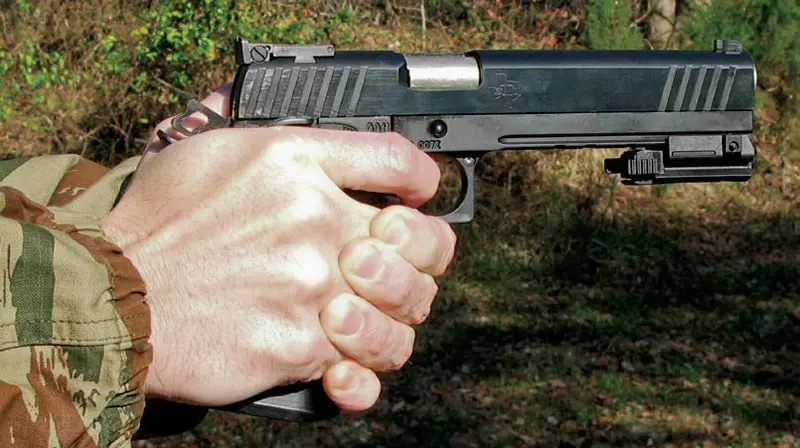
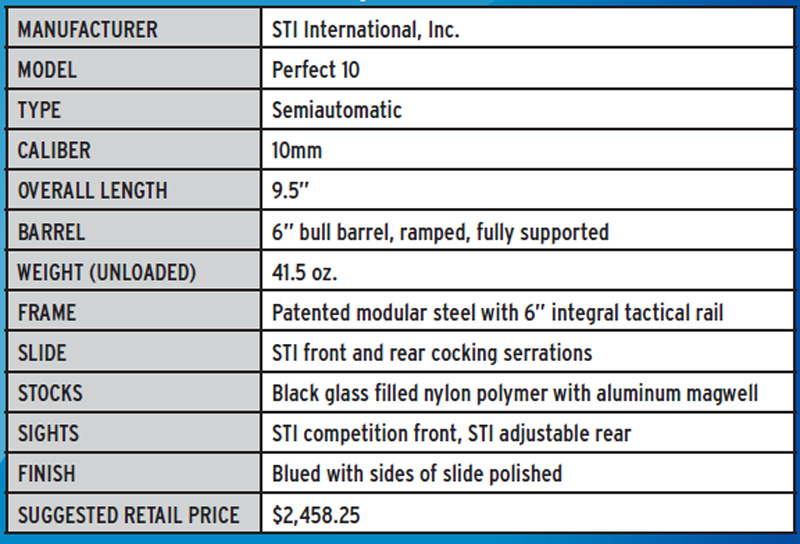
That extra couple of inches of barrel made the guns more efficient consumers of the black smoky stuff and squeezed a bit more velocity out of the propellant for those chugging chunks of lead. They were much more difficult to conceal when that requirement became a priority.
Of course, the smaller pocket revolvers were lethal, but the shorter barrels often resulted in anemic ballistic performance. Victims more often died of gunshot complications such as infections days or weeks later.
SHORTER BARREL LENGTHS STANDARD
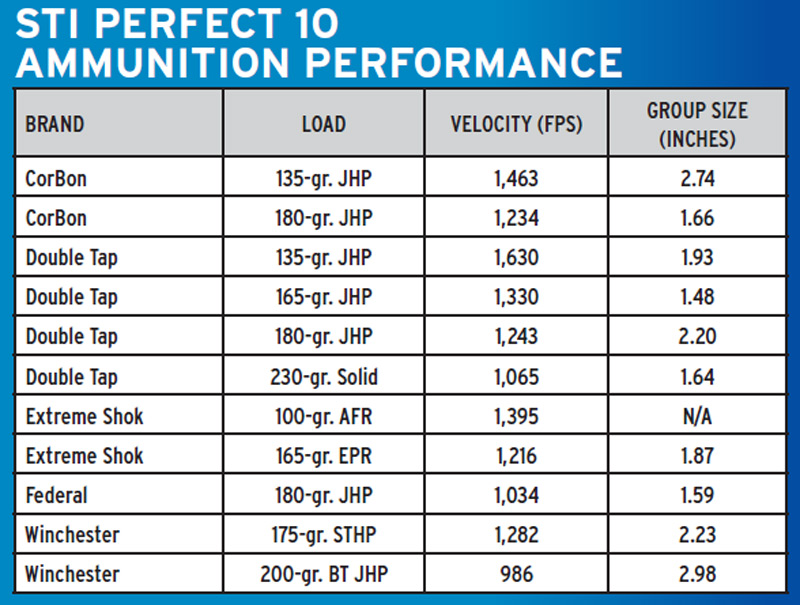
When rimfire, and later centerfire, ammunition was introduced, reliability quotients improved considerably. Wet weather and other adverse field conditions were no longer the concerns that they once had been. At first, terminal performance didn’t necessarily advance that much over the big-bore blackpowder blasters, but as time went by, hollow-point bullets greatly eclipsed the old timers in every ballistic category. We also saw handgun barrels get shorter. Today it’s rare indeed to see a police officer carrying a sidearm with a barrel over four or five inches.
STI PERFECT 10
If you discount single-action revolvers, there are nevertheless some gun-crafting houses that continue to offer a limited selection of semiautomatic pistols in the extended barrel genre. Primarily made for hunting applications, some competitors and tactical personnel do like the longer sight radius, heft and additional velocities that can be achieved and result in kinetic energy/power factor increases and flatter trajectories.
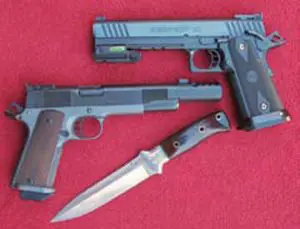
One such custom gun house is Strayer Tripp International (STI).
Well known for its steel insert, polymer- framed competition and carry guns, STI has quite successfully ventured into the long-barrel arena with its “Perfect 10” 10mm high-capacity pistol.
LIVING WITH THE TEN
I have a great deal of experience with what some consider a “dead” cartridge, and am one of the few who carried it while on duty and shot it regularly in competition.
I participated in the post-FBI Miami Massacre meeting that hatched the idea to spec out and build an FBI pistol in 10mm. When some attendees voiced concerns over the length of the cartridge and resulting grip dimensions, which made things difficult for smaller agents, a bright and savvy Secret Service firearms instructor offered an ignored, but very worthwhile, solution—to “shorten the case.”
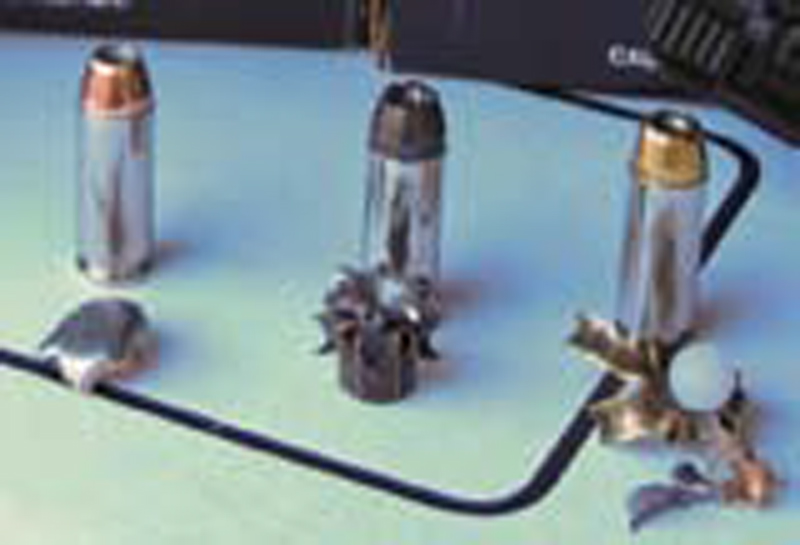
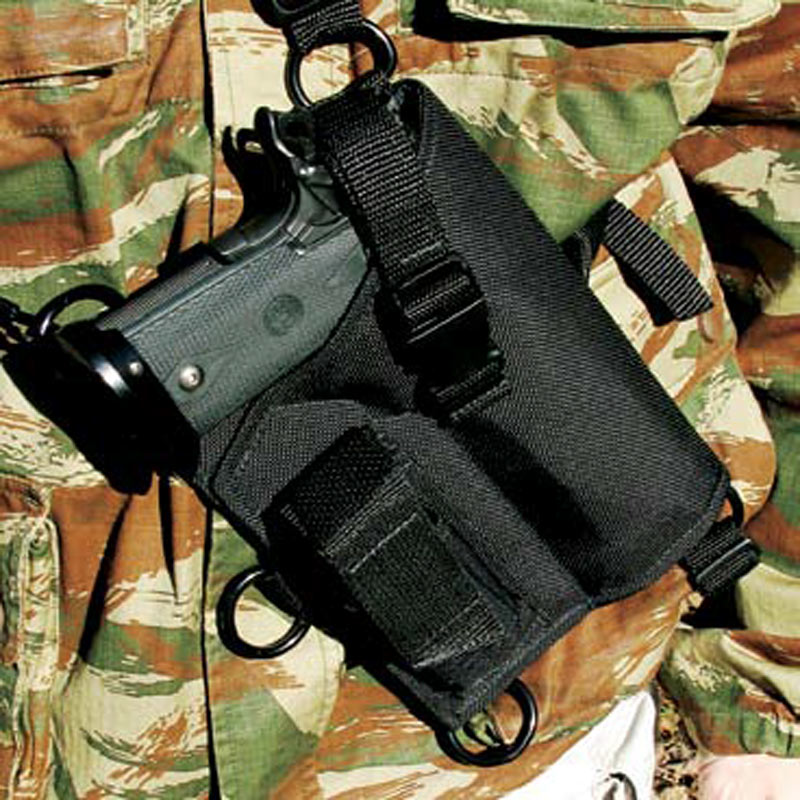
However, subsequent testing of the 10mm at the FBI Academy resulted in a 100% success rate for meeting the FBI’s ammunition performance criteria with the 170-grain Norma jacketed hollow point at 1,358 feet-per-second (fps) and 92% to 95% rates for the four other 180-grain JHPs evaluated. (At the time, the 158-grain Federal Hydra- Shok® .357 Magnum was the only other cartridge to attain a 100% rating.)
I was also present at the SHOT Show when Smith & Wesson unexpectedly announced the development of the .40 S&W round, catching the FBI completely by surprise after their mutual and arduous work on creating the ill-fated 10mm pistol for bureau agents. Post- Miami shooting emotions were high, so S&W got a very good contract to which the FBI was deeply committed.
RELIABILITY PROBLEMS
However, the marriage was strained almost from the beginning, and the reliability problems associated with the pistol almost split the FBI Academy into two hostile camps.
I never had a problem with my issue 1076, which oddly but understandably featured SIG Sauer controls, since it replaced that company’s P226 pistol. And even though this heavy hunk of stainless steel was fed customized, watered-down versions of the then-typical 10mm cartridges to increase depth of penetration and reduce punishing recoil, it was purposely made massive in anticipation of some enterprising agent putting the unauthorized hot Norma round through it.
In addition to my acceptance of it as an issue sidearm, I embraced the round for USPSA/IPSC competition and shot it for years in both limited and unlimited classes.
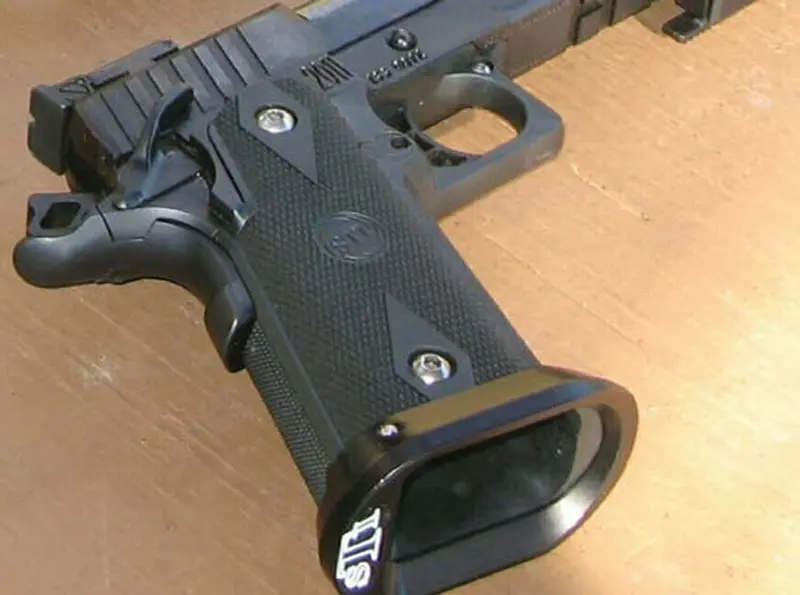
LIKE AN OLD DUELING PISTOL
When I shook hands with the big 42- ounce (unloaded) STI Perfect 10, it immediately brought back memories of my old compensated 10x25mm 1911 A1 and Glock 20 that I pounded the area and regional shooting circuits with.
Like the majority of STI offerings, it too is a 1911-based pistol—perhaps the world’s most desirable pistol design. Like the graceful old dueling pistols, the STI is distinctly muzzle heavy, and that’s exactly where I like the weight bias to be for a heavy-caliber handgun. The extra few ounces out there help to reduce muzzle rise and enable the shooter to rapidly re-index dangerous game like wild boar, which has been known to require multiple pistol-caliber hits before collapsing.
While considering the gun’s unloaded heft, that is certainly not the whole story. What I refer to as “Go to War Weight,” or a fully charged piece, translates to 52 ounces with 14 180-grain rounds. While an outdoorsman may tolerate a handgun approaching four pounds, and a SWAT cop could comfortably carry it operationally in a drop holster, an action shooter might find its bulk a tad slow for rapid target-to-target acquisition.
UNIQUE CHASSIS
The STI chassis consists of steel inserts ensconced within a glass-filled, nylon polymer receiver that has sharp and deep checkering fore and aft. At the base of its generous grip is a huge, funnel- like aluminum magazine well that only a neuromuscular misfit could miss during accelerated mag swaps. Magazine changes are further facilitated by a raised magazine release.
An indicator of its intended dual use, the full-length dust cover on the Ten includes an accessory rail that comes standard on many service pistols. This dust cover gives the STI a slab-sided profile that looks cool but complicates the hunt for good off-the-shelf holsters. Its trigger guard is squared and checkered for those who prefer to grip it with the index finger of the support hand.
Its polished, pre-hardened bar-stock 4140 carbon blue steel round-topped slide features fore and aft cocking serrations. Its breech face is wire EDM cut for the maximum precision angle and is topped with an STI fully adjustable rear sight and dovetailed front blade. The ejection port is deeply lowered and widely flared for reliable case ejection.
BARREL AND TRIGGER
The heart of this pistol is its six-inch, fully supported and ramped 416 rifle grade, stainless steel, forged bull barrel. Its bore is button rifled and then air gauged to ensure an exact sized and consistent tube. All barrels are vacuum heat-treated and tempered to 40 RC hardness and then machined to exacting specifications.
Unfortunately, with five pounds average resistance, its linear trigger is unexciting. Its miniscule take-up is followed by a slightly gritty and stiff but dutiful break that facilitates rapid fire. However, it is too heavy, in my opinion, for a pistol designed primarily for sporting activities rather than self-defense or general law enforcement use. A 3.5- pound trigger would certainly enhance the Ten’s operation, but I realize that the heavier trigger is a pre-emptive measure in anticipation of possible litigation. The Ten’s hammer is skeletonized for enhanced lock time.
Enlarged ambidextrous safeties supported by a beavertail grip safety and redundant internal safeties make up the safety ensemble.
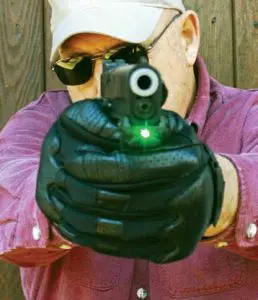
Two 13-round, 410 stainless steel magazines with polymer base pads are provided with the gun in a lockable and padded plastic case with instruction manual and product catalog. The manual goes well beyond basic field stripping and provides tutorials on detailed component removal for thorough maintenance and parts replacement.
With the exception of a two-piece recoil spring guide rod, which requires a small Hex wrench to remove the “outer guide rod,” disassembly is typical of the 1911 pistol.
CARRY SYSTEMS
For tactical scenarios, BlackHawk sent me their incomparable SERPA drop holster, which needs little explanation to regular S.W.A.T. readers. To aid the avid hunter or fisherman, particularly in bear country, Grizzly Tough Holsters of Wasilla, Alaska shipped me their very practical nylon cross-chest scabbard with integrated spare magazine pouch.
CONVENTIONAL/UNCONVENTIONAL AMMUNITION
I love handgun hunting and recently nailed a 300-pound Russian Razor Back boar with a .40 S&W caliber pistol loaded with Extreme Shok (ES) ammunition. However, it took four “Nytrillium” payload packed rounds to bring it down after it attempted to escape. The 10mm has a significant edge over its stunted cousin and would have probably completed the job with less drama.
Unlike the popular .40, the 10mm uses a large pistol primer instead of a small one and obviously has more capacity for propellant. Bullet weights range from 135 to 200 grains with conventional ammunition and velocities of 950 fps to 1600+ fps when fired from a 4.6-inch barrel. Out of a six-inch tube, expect approximately 50 to 100 fps more out of the same rounds.
However, the Ten can really rip with Le Mas Blended Metal Technologies’ Special Purpose Low Penetration fodder. Sold only to military and/ or police, velocities in excess of 2,000 fps can be realized from service-length sidearms. Married to proprietary bullet design, these velocities will defeat Level IIIA soft body armor and ¼-inch T-304 steel plates without overpenetrating living soft tissue.
From past tests that I have conducted with other pistols, Le Mas 10mm in 77- and 36-grain formats can deliver velocities of 2,500 fps and 3,000+ fps respectively from six-inch runways. Although the STI functioned impeccably with every other round tested, its recoil spring was not heavy enough to resist the extreme pressures developed by the Le Mas round and its slide unlocked prematurely, peppering me with hot gasses and particles of propellant. When that happened, I discontinued the use of Le Mas in this pistol.
Nevertheless, I was able to test 11 other loads that would be appropriate for defense or gathering medium-sized game.
LASERMAX GREEN LASER AND ACCURACY
Other writers have reported achieving two-inch groupings at 50 yards with a scope-augmented STI. I tried something different and employed an under-the-barrel LaserMax Uni-Max 5mW green laser to obtain the obligatory patterns on paper. Its pulsating green pencil-width beam lanced through an overcast day and provided more precise pinpoint alignment feedback than the gun’s iron sights. I also confined my handheld and bench-rested attempts to 75 feet.
The most accurate round fired was Double Tap’s (DT) 165-grain Golden Saber JHP, which clustered into 1.48- inch five-round groups. Highest average velocity honors were garnered by DT’s 135-grain Nosler JHP at 1,630 fps.
Winchester’s 175-grain Silver Tip HP barked and bucked the most, with generous recoil and muzzle flash.
The heavyweight 200- to 230-grain Winchester JHP and Double Tap lead solids respectively were the most pleasant to trigger, as were Extreme Shok’s 100- and 165-grain Air Freedom and Extreme Penetration offerings.
STI magazines leave little room for variances in overall cartridge length (OAL). At 1.27 inches OAL, CorBon’s 180-grain JHP was a tenth of an inch too long and the pistol’s staggered-box 13-round magazines would not accept it without binding. It had to be fed into the Ten’s chamber one round at a time. Subsequently, the good folks at Dakota Ammo sent me some 135-grain CorBon JHPs, which functioned flawlessly in the big Ten.
Ejection is vigorous: spent cases cascade 15 feet to the shooter’s right rear. The distance that fired cases traveled indicates that the recoil spring could be increased from 18 to 20 pounds.
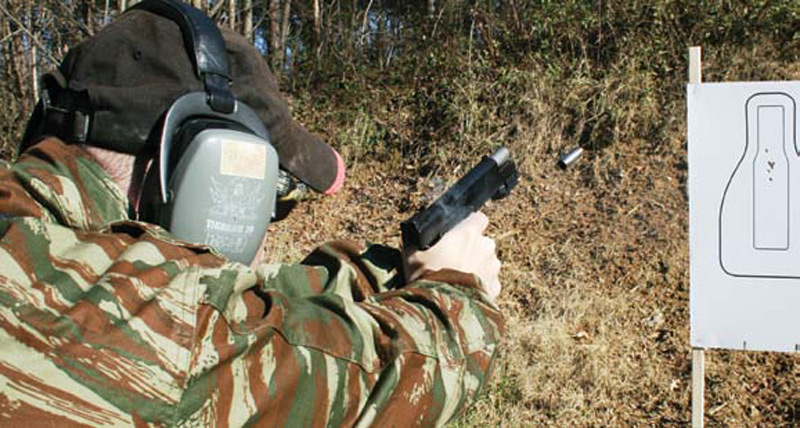
PERMA-GEL TESTS
I selected three rounds for penetration and expansion tests in blocks of Perma- Gel (PG) tissue simulant. Heavier bullets are generally deep penetrators, and Winchester’s 200-grain JHP did not disappoint. It plowed through 17 inches of PG and expanded to a classic .81 caliber. My agency had a vehicle-involved shooting several years ago with an H&K MP 10mm submachine gun. At the time, we were loaded with 190-grain JHPs. The round punched through the car’s rear window, zipped through the driver’s seat, passed through the suspect and smashed into the dashboard.
Double Tap’s 135- and 165-grain JHPs ripped into the blocks with a vengeance. The 135 penetrated two inches, creating a large temporary stretch cavity and completely fragmenting. The bullet’s base and lead remnant penetrated 10.5 inches and flared to .71 caliber.
DT’s 165 grain also fragmented violently and shed its core, which consists of lead and a nylon plug. Penetrations varied between 10.5 to 14.5 inches, with its dramatically distorted Golden Saber jacket opening to .91 caliber.
CONCLUSIONS
An active-duty federal agent, SWAT team member, and agency firearms instructor assisted me in evaluating the Perfect 10. He liked everything about the pistol. Although not a habitual hunter, he unconditionally recommends the Ten for SWAT employment. The gun’s weight and balance comfortably handle the hottest conventional rounds.
The 10mm caliber, while not widely popular, can outperform the venerable .45 ACP in its more robust configurations, but from a recoil perspective is not the practical answer for general law enforcement or personal defense applications.
